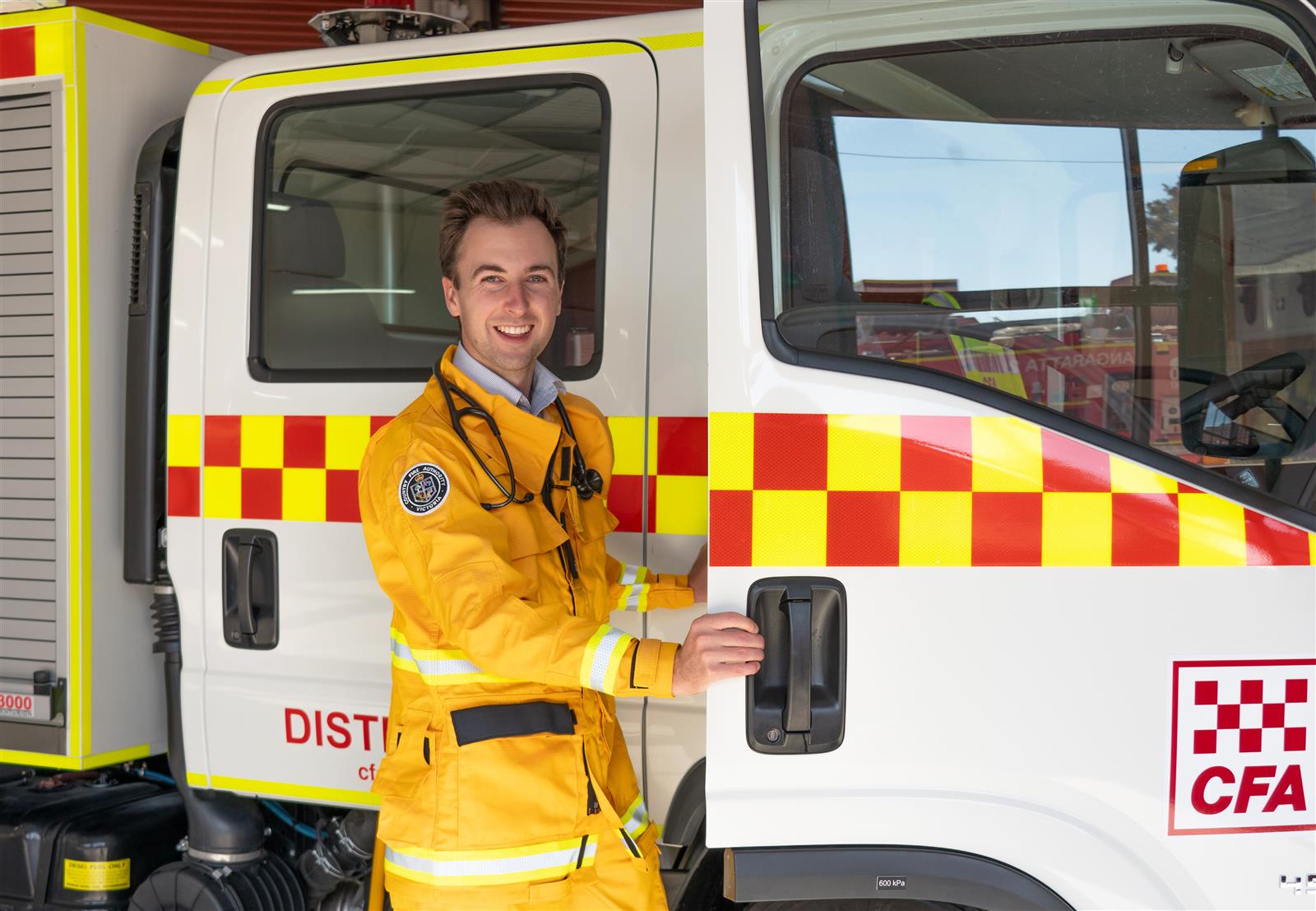 Student doctor Tim Duff
Student doctor Tim Duff
Firefighting comes with risk, including the risks of smoke and heat stress. It’s important that all members get home safely – and that’s where our skilled rehabilitation units can help.
CFA’s rehab units supports the health and wellbeing of members on the fireground. CFA has 22 rehab units across the state – all run by volunteer members – and one team at CFA headquarters.
The units carry health monitoring equipment, thermo-anemometers, oxygen, heaters, fans, water, women’s hygiene packs and snake bite kits to help firefighters make a speedy recovery and get them back to operational duty as soon as possible.
We spoke to four volunteer members of our rehab units about their experiences and the importance of rehabilitation.
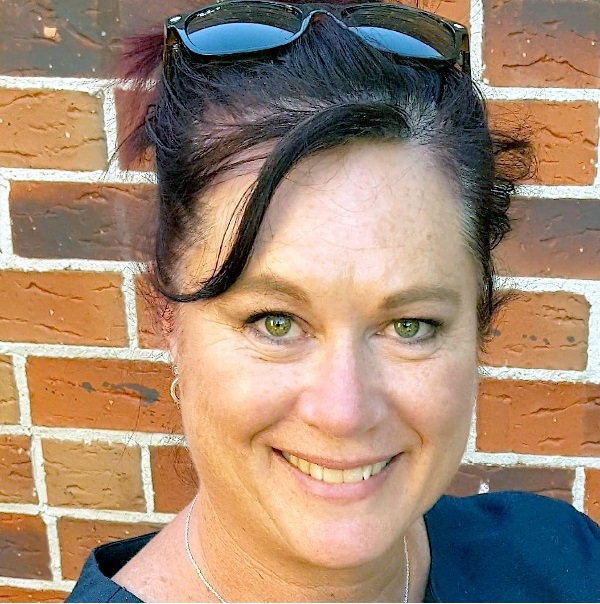
ANGELA COX, YELLINGBO BRIGADE
Although she is now also an operational firefighter and brigade secretary, registered nurse Angela Cox joined Yellingbo Fire Brigade in 2016 specifically to provide firefighter rehabilitation.
“After attending a community safety information day, I knew I wanted to help my local community,” Angela said. “As Yellingbo had the first dedicated rehab vehicle and I was from a health background, I jumped at the opportunity to use my skills to contribute in this way.
“But you don't have to be a health professional to join a rehab unit. Most of our team members haven’t got a health qualification and full training in firefighter cooling methods, hydration practices and first-aid injury management is provided.
“The units are a closeknit team that provides camaraderie, and being part of a rehab team is a wonderful way to give back to the community if you don’t want to be an operational firefighter.”
Angela stresses the importance of the role and of rehab units in preventing significant injury and hospitalisation of firefighters with carbon monoxide poisoning.
“It’s our job to help everyone get home safely,” she said. “Carbon monoxide is a dangerous gas. What we don't realise as firefighters is that it builds up in our blood when we are around toxic smoke and fumes.
“By taking firefighters off the fire front for half an hour or so to let them cool their core body temperature and let them breathe fresher air while we check their hydration and carbon monoxide levels, we can ensure they are safe and rested, ready to return to the firefight.
“Early intervention is key. That’s why it’s so important to request rehab early so we can be most effective,” Angela added.
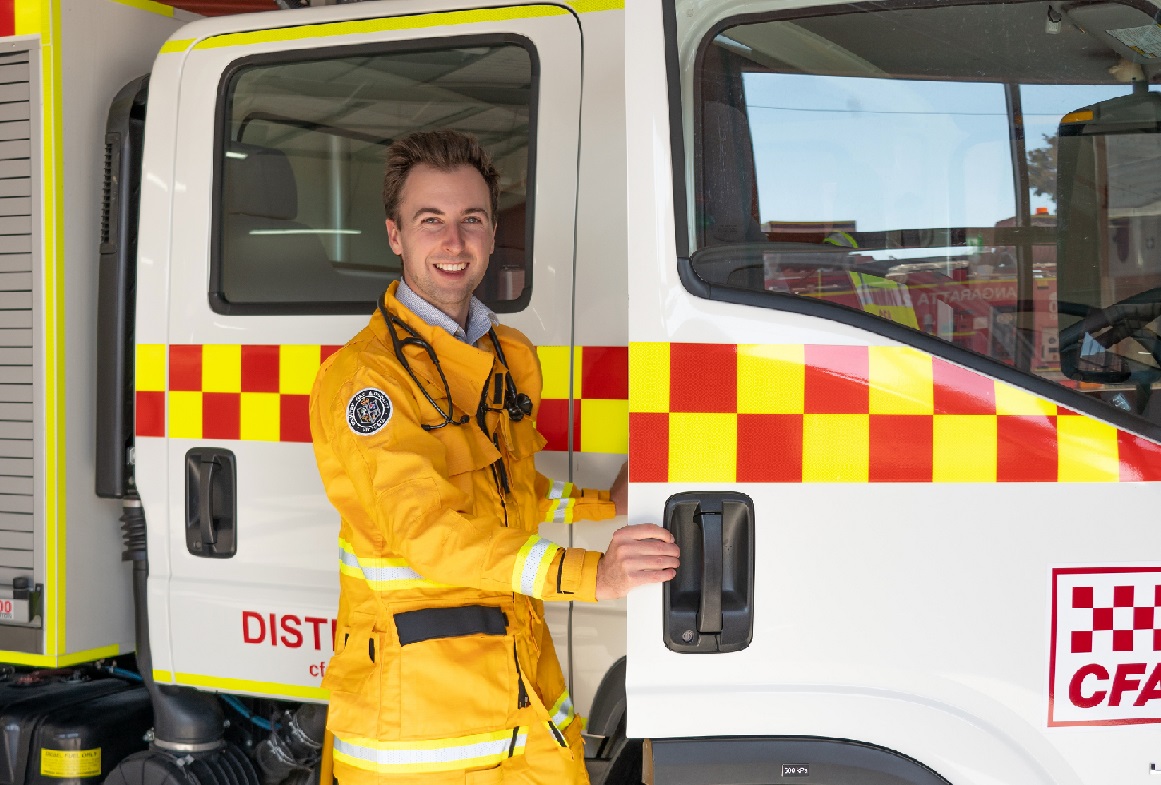
TIM DUFF, WOODEND AND WANGARATTA BRIGADES
“Depending on the services being offered at an incident, a rehab unit might be a chance to sit and grab a drink and a bite to eat, have a yarn or get a check over while you rest,” student doctor Tim Duff said.
Tim joined Woodend Fire Brigade as a firefighter at the end of Year 12 after feeling frustrated at not being able to support his community during fires in the area.
“Joining a rehab unit came later after the teams became more popular and we developed one in Woodend,” he said. “I’m currently placed in Wangaratta as part of my studies and am responding with the District 22 and 23 units while I’m here.
“Being part of a rehab unit is a great way to get involved, see more incidents and experience the logistical side of emergency management. There are roles for firefighters, non-operational members and of course health professionals.”
Tim said evidence showed that rehabilitation works, with the goal to keep members safe and on the fireground.
“Rehab unit members are well trained, resourced and informed and are there to prevent people from getting to the point of needing serious medical help,” he said. “Better to pick up on small things before they go unnoticed and affect your work on the fireground, your return to work or your long-term health.”
Tim recalls a proud moment at a grassfire in Clarkefield where rehab team members all picked up consistently high carbon monoxide readings while firefighters were blacking out.
“We used that as an opportunity to brief crews about how the chemicals we breathe in while firefighting can affect us – perhaps faster than most realised,” Tim said.
“It was awesome to see so many firefighters coming up to us after, asking about carbon monoxide and how to avoid it.
“For incident controllers and crew leaders, calling in rehab is simple, hassle-free and ticks a massive box in looking after your firefighters. For individuals, there’s really nothing to lose.”
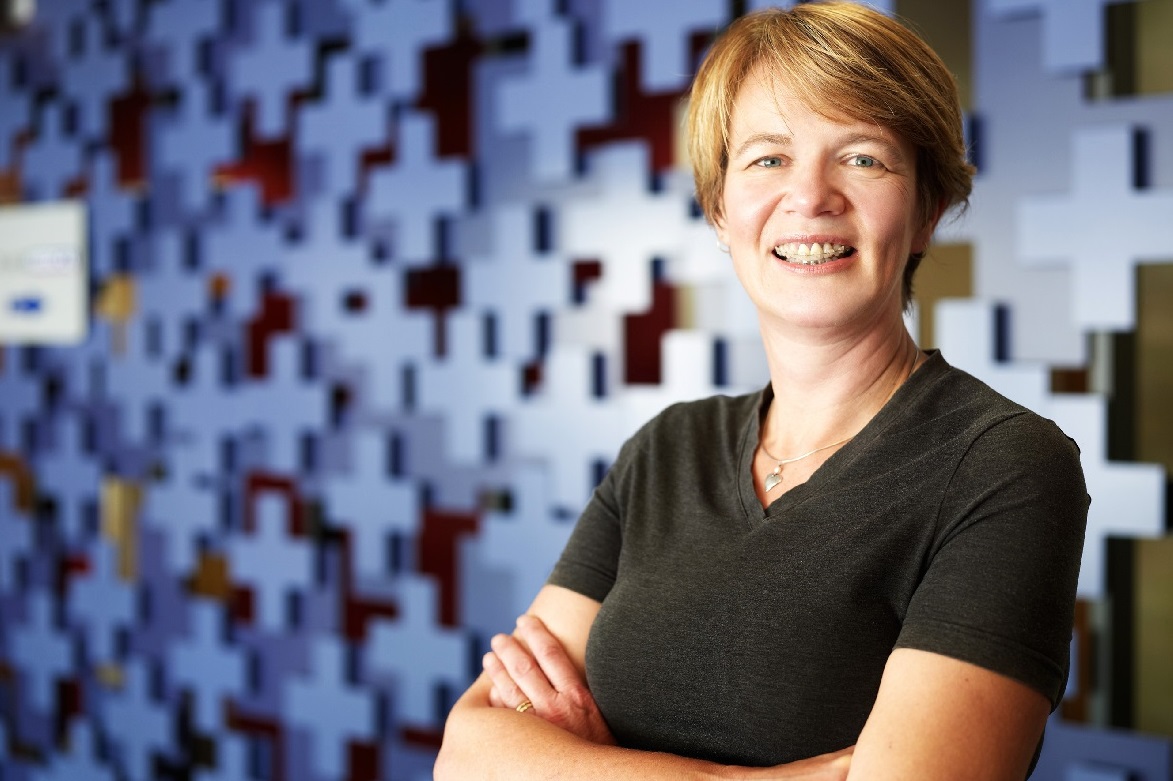
SUE CLARKE, MOE SOUTH BRIGADE AND YALLOURN NORTH REHAB UNIT
“The message is very much about prevention. We rely on our firefighters to keep us safe and we should be doing all that we can to keep them safe on the fireground,” Sue Clarke said.
Sue has been a member of Moe South brigade since 2016. A GP, she has also been a member of Yallourn North’s rehab team, one of the first brigade-based rehab teams at CFA, since 2018.
“My husband is a volunteer. Over the years I had become increasingly concerned about the health and safety of members on the fireground when the opportunity to join a rehab unit came up,” Sue said.
“There are many potential health issues faced by people when fighting fires, particularly during prolonged campaigns in hot weather when heat stress is a very real risk.
“Often when volunteers arrive at a fireground they are already at the lower limit for hydration, and we know that heat stress is a risk factor for cardiovascular events such as heart attacks.”
Sue said preventing heat stress can reduce the risk of serious medical events occurring while members are fighting fires and even in the immediate weeks afterwards.
“We have monitoring equipment that helps us assess for heat stress and carbon monoxide levels. We have cooling chairs, hydration fluids, and most popular – chips and lollies!
“We also spend time educating volunteers when we are on a fireground or at training exercises. When volunteers have a better understanding of the purpose of rehab we find they are keen to be checked.
“It’s an adage we hear a lot but it’s always true: prevention is better than the cure.”
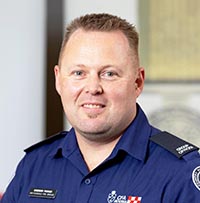
GREG PARKER, SMYTHESDALE BRIGADE
An endorsed enrolled nurse, Greg Parker has been a CFA volunteer for 27 years. He joined his parents at Smythesdale brigade when he was 11 years old as a member of the running team. As well as being the brigade’s specialist response coordinator for rehab, he's currently Grenville group officer.
“When you go to incidents as a rehab unit you are there to support all emergency services,” Greg said.
“A lot of members don’t know what we do or what rehab and health monitoring is all about. You are there to provide a service but also to educate the members who come through or those who may hesitate to come through.”
Smythesdale brigade was approached a number of years ago to see whether it was interested in starting a rehab unit for West region.
“We had a couple of health professionals in the brigade who thought it was a great idea,” he said.
“Some members were skeptical because they weren’t sure how the cooler chairs worked. But when they had experienced them, there was a total shift in their thoughts about the unit.
“We started with a repurposed support trailer and about three or four years ago we were able to purchase a purpose-built rehab unit as part of VESEP.”
Greg encourages members to come up and chat if they see a rehab unit on the fireground.
“Firefighter rehab is vital to help our members to recover on the fireground. It is there to assist crews to recoup post strenuous work, giving them an area to have something to eat, rehydrate and, if required, have their health monitored by crews.
“And it doesn’t just have to be at a structure fire. Rehab can be used at grass and scrub fires, long duration hazmat, long duration rescue, and many others.
“Come and ask questions. All teams are happy to explain what we do, how we do it and why.”
| Submitted by |
News and media |